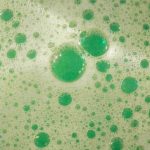Chlorides are widely distributed in nature as salts of sodium (NaCl), potassium (KCl), and calcium (CaCl2). Chloride in water can be a residual of chlorine and has been attributed to use of salt to de-ice roads. Other sources of chloride in ground water may be related to sea water trapped in sediments, the use of inorganic fertilizers, landfill leachates, septic tank effluents, animal feeds, and industrial effluents. High levels can contribute to corrosivity of plumbing and may be accompanied by high sodium levels which may be a health concern. Chlorides can corrode metals and affect the taste of food products. Therefore, water that is used in industry or processed for any use has a recommended maximum chloride level.

Posted inChemistry for Marine Engineering


Comments are closed